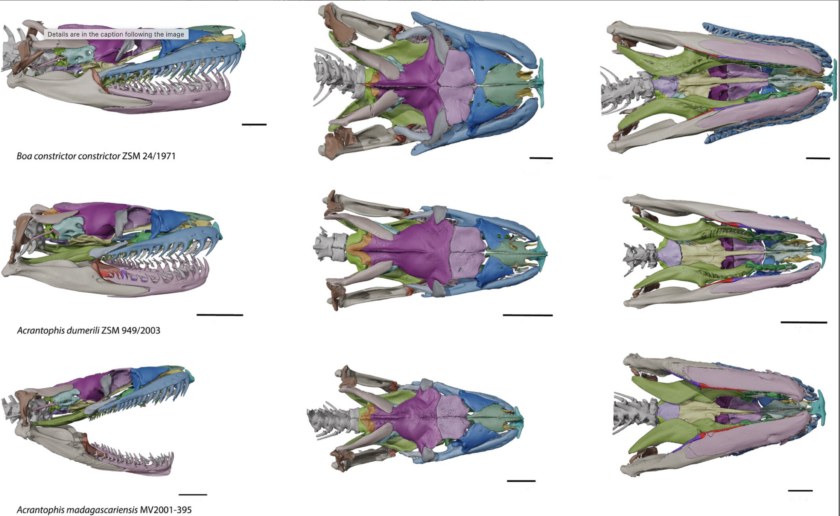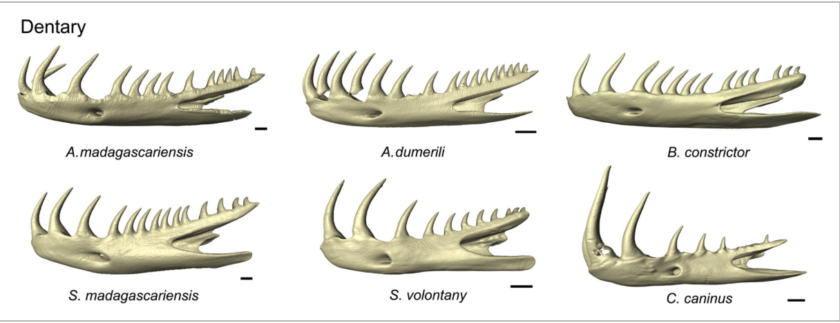We are happy to share some tomography research by one of our Basic & Applied Research Community members, Alex Hall.
Potential Evolutionary Convergence in Trophic Adaptations of Two Booidean Snake Lineages as Evidenced by Skull Morphology
This was a 7 year long project with international collaboration across multiple countries. Through documenting the diversity of Malagasy reptiles, Hall and collaborators were struck with similarities in the skulls of Booidean snakes to lineages to neotropical lineages known now to be distantly related based on molecular phylogenetics. The similarities were so great that originally the Malagasy snakes were previously thought to somewhat closely related to other Booidean snakes, but actually they are quite distantly related and even now placed in their own family.
Despite largely having the same body plan, there is much variety in the morphology of snakes and especially in their preaxial (i.e., head) skeleton. Other than differences in size, some snakes are suited for eating fish, others eat snails or other gooey prey, some specialize in small arthropods, and so on. There are some common patterns in feeding types, and this can be seen in the snake skull. The similarities in these Booidean snakes are interesting as a potential example of convergence towards a similar method of feeding. That is despite the many millions of years of divergence between these groups of snakes.

Using micro-CT, the authors rigorously described the skull anatomy of six snake species with four Madagascan and two neotropical boas. Via segmentation of the skulls, the individual bones were compared between these six animals. In summary, we confirmed prior investigations of high levels of similarities in cranial morphology between the Madagascan snakes and one of the neotropical snakes. So the arboreal snakes and terrestrial snakes shared more in common with each other than species that were more geographically close. This study illustrates the utility of non-destructive imaging with museum specimens to document facts that explain the process of evolution.

The data have been shared on Morphosource. Link to publication is here. Thank you to Alex and team for sharing your tomography research!
